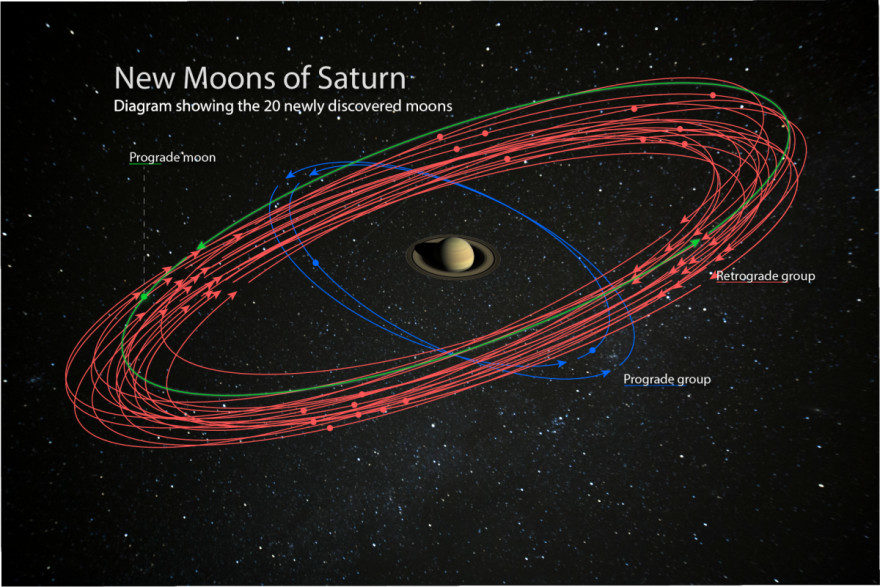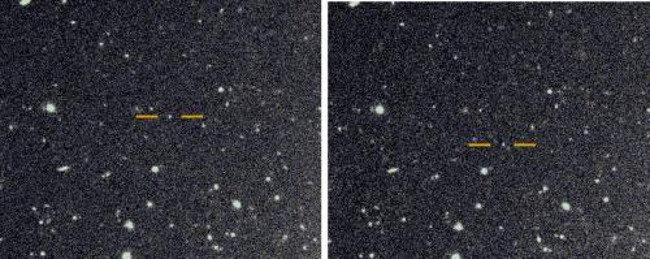
Each of the newly discovered moons is about five kilometers, or three miles, in diameter. Seventeen of them orbit the planet backwards, or in a retrograde direction, meaning their movement is opposite of the planet's rotation around its axis. The other three moons orbit in the prograde--the same direction as Saturn rotates.
Two of the prograde moons are closer to the planet and take about two years to travel once around Saturn. The more-distant retrograde moons and one of the prograde moons each take more than three years to complete an orbit.
"Studying the orbits of these moons can reveal their origins, as well as information about the conditions surrounding Saturn at the time of its formation," Sheppard explained.

"This kind of grouping of outer moons is also seen around Jupiter, indicating violent collisions occurred between moons in the Saturnian system or with outside objects such as passing asteroids or comets," explained Sheppard.
The other newly found prograde moon has an inclination near 36 degrees, which is similar to the other known grouping of inner prograde moons around Saturn called the Gallic group. But this new moon orbits much farther away from Saturn than any of the other prograde moons, indicating it might have been pulled outwards over time or might not be associated with the more inner grouping of prograde moons.
If a significant amount of gas or dust were present when a larger moon broke apart and created these clusters of smaller moon fragments, there would have been strong frictional interactions between the smaller moons and the gas and dust, causing them to spiral into the planet.
"In the Solar System's youth, the Sun was surrounded by a rotating disk of gas and dust from which the planets were born. It is believed that a similar gas-and-dust disk surrounded Saturn during its formation," Sheppard said. "The fact that these newly discovered moons were able to continue orbiting Saturn after their parent moons broke apart indicates that these collisions occurred after the planet-formation process was mostly complete and the disks were no longer a factor."
The new moons were discovered using the Subaru telescope atop Mauna Kea in Hawaii. The observing team included Sheppard, David Jewitt of UCLA, and Jan Kleyna of the University of Hawaii.
"Using some of the largest telescopes in the world, we are now completing the inventory of small moons around the giant planets," says Scott Sheppard. "They play a crucial role in helping us determine how our Solar System's planets formed and evolved."
Last year, Sheppard discovered 12 new moons orbiting Jupiter and Carnegie hosted an online contest to name five of them.
"I was so thrilled with the amount of public engagement over the Jupiter moon-naming contest that we've decided to do another one to name these newly discovered Saturnian moons," Sheppard said. "This time, the moons must be named after giants from Norse, Gallic, or Inuit mythology."
Contest details are available here.
More details about Saturn's moons are available here.



More powerful telescopes.
Eppur si consumit!